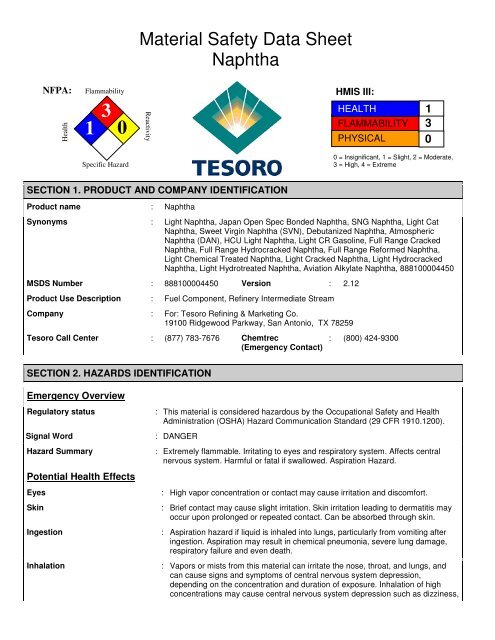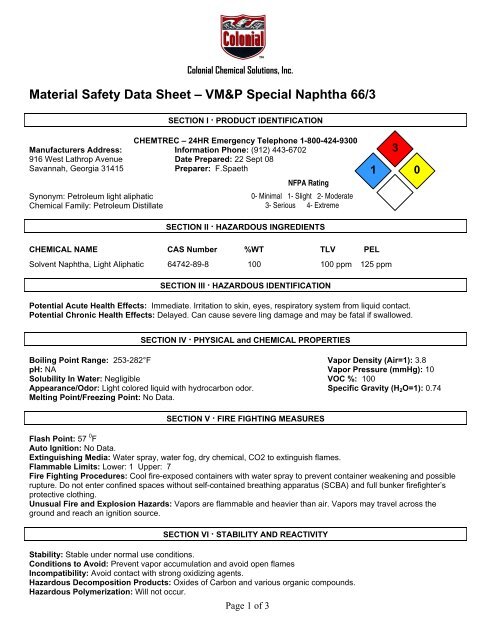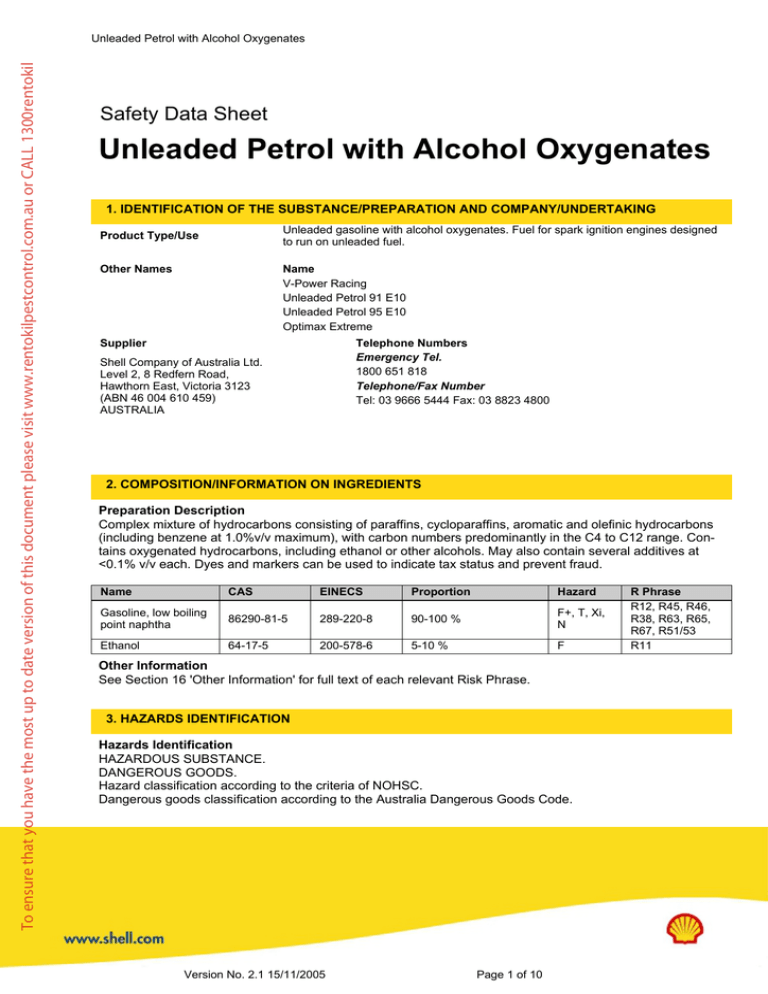Naphtha hazard class
Home » chemical » Naphtha hazard class >Naphtha hazard class
Naphtha Hazard Class. Hazardous Substances Data Bank HSDB Critical density. The classifications of the substances listed in the list are based on their harmonised classifications per Table 3 of Annex VI to. UNUSUAL FIRE AND EXPLOSION HAZARD. Hazard potential is an index on a scale of from A to D inclusive of the severity of the hazard associated with the substance contained in the tank because of the toxic flammable or explosive nature of the vapor gas or mist produced there from.
Trafigura Com From
Not flammable not classified as flammable liquid based on GHS hazard classification. The toxic hazard is determined from the concentration measured in parts by volume of a gas or vapor per million parts by volume of contaminated. CRC Press LLC Boca Raton. In addition as part of an ongoing education and training effort communicate all information on the health and safety hazards of Asphalt to potentially exposed workers. Aspiration may result in chemical pneumonia severe lung damage respiratory failure and even death. To prevent fires hazardous liquids need special precautions taken for their storage handling and use.
Methanol is the primary alcohol that is the simplest aliphatic alcohol comprising a methyl and an alcohol group.
Extracts of. Extracts of. Benzene is a solid below 42F 56C. Chemical Hazard Response Information System CHRIS - Hazardous Chemical Data. To understand how Class 1 Div 1 units are different from other specifications we need to know the rating system. Clear colorless to light yellow liquid at room temperature.
 Source: yumpu.com
Source: yumpu.com
ASPHALT page 2 of 6 This Fact Sheet is a summary source. Use in a well-ventilated area. Methanol is the primary alcohol that is the simplest aliphatic alcohol comprising a methyl and an alcohol group. These guidelines are not mandatory unless a. Continuous hazard Intermittent hazard Hazard under abnormal conditions Zone 0 Zone 1 Zone 2 Division 1 Division 1 Division 2 Hazardous locations CEC classifications Class I.
 Source: accuform.com
Source: accuform.com
143 Transport hazard classes ADRRID. PRODUCT AND COMPANY IDENTIFICATION Product name. Class B fire extinguishing media such as CO 2 or foam is recommended. What makes Class 1 Division 1 different from other Classifications. 144 Packing group if applicable.
Source:
This list contains substances that have been assigned hazard property HP waste codes 1-15 as defined in terms of the hazard class and category hazard H statement andor concentration limits provided in Annex III of the Waste Framework Directive 200898EC. Hazardous Substances Data Bank HSDB Critical density. This list contains substances that have been assigned hazard property HP waste codes 1-15 as defined in terms of the hazard class and category hazard H statement andor concentration limits provided in Annex III of the Waste Framework Directive 200898EC. Individual coating components are present at values below the reporting requirements of the WHMIS Ingredient Disclosure List. Benzene is used to make chemicals used in the manufacture of industrial products such as dyes detergents explosives pesticides synthetic rubber plastics and pharmaceuticals.
Source:
Water spray is recommended to cool or protect exposed materials or structures. Extracts of. In addition as part of an ongoing education and training effort communicate all information on the health and safety hazards of Asphalt to potentially exposed workers. Water may be ineffective for extinguishing the fire unless used under favorable conditions by experienced fire fighters. Post hazard and warning information in the work area.
 Source: yumpu.com
Source: yumpu.com
Chemical Hazard Response Information System CHRIS - Hazardous Chemical Data. UNUSUAL FIRE AND EXPLOSION HAZARD. Gasoline acetone ammonia benzene butane cyclopropane ethanol hexane methanol methane vinyl chloride natural gas naphtha propane or gases of equivalent hazard. The toxic hazard is determined from the concentration measured in parts by volume of a gas or vapor per million parts by volume of contaminated. Benzene is a solid below 42F 56C.
Source:
Water may be ineffective for extinguishing the fire unless used under favorable conditions by experienced fire fighters. Water may be ineffective for extinguishing the fire unless used under favorable conditions by experienced fire fighters. Hazard potential is an index on a scale of from A to D inclusive of the severity of the hazard associated with the substance contained in the tank because of the toxic flammable or explosive nature of the vapor gas or mist produced there from. PRODUCT AND COMPANY IDENTIFICATION Product name. Benzene is used to make chemicals used in the manufacture of industrial products such as dyes detergents explosives pesticides synthetic rubber plastics and pharmaceuticals.
Source:
This list contains substances that have been assigned hazard property HP waste codes 1-15 as defined in terms of the hazard class and category hazard H statement andor concentration limits provided in Annex III of the Waste Framework Directive 200898EC. Vapors or mists from this material can irritate the nose throat and lungs and can cause signs and symptoms of. Water spray is recommended to cool or protect exposed materials or structures. This list contains substances that have been assigned hazard property HP waste codes 1-15 as defined in terms of the hazard class and category hazard H statement andor concentration limits provided in Annex III of the Waste Framework Directive 200898EC. What makes Class 1 Division 1 different from other Classifications.
 Source: fliphtml5.com
Source: fliphtml5.com
147 Transport in bulk according to Annex II of MARPOL 73. The National Fire Protection Agency NFPA and the International Code Council ICC have developed guidelines for the safe storage and use of flammable and combustible liquids under the Uniform Fire Code. In addition as part of an ongoing education and training effort communicate all information on the health and safety hazards of Asphalt to potentially exposed workers. What makes Class 1 Division 1 different from other Classifications. No data available.
Source:
Extracts of. Hazardous Substances Data Bank HSDB Critical density. 143 Transport hazard classes ADRRID. Benzene is used to make chemicals used in the manufacture of industrial products such as dyes detergents explosives pesticides synthetic rubber plastics and pharmaceuticals. Benzene is a solid below 42F 56C.
 Source: studylib.net
Source: studylib.net
08698 gcu m at 25 C. These guidelines are not mandatory unless a. The National Fire Protection Agency NFPA and the International Code Council ICC have developed guidelines for the safe storage and use of flammable and combustible liquids under the Uniform Fire Code. In addition as part of an ongoing education and training effort communicate all information on the health and safety hazards of Asphalt to potentially exposed workers. To understand how Class 1 Div 1 units are different from other specifications we need to know the rating system.
If you find this site helpful, please support us by sharing this posts to your own social media accounts like Facebook, Instagram and so on or you can also bookmark this blog page with the title naphtha hazard class by using Ctrl + D for devices a laptop with a Windows operating system or Command + D for laptops with an Apple operating system. If you use a smartphone, you can also use the drawer menu of the browser you are using. Whether it’s a Windows, Mac, iOS or Android operating system, you will still be able to bookmark this website.